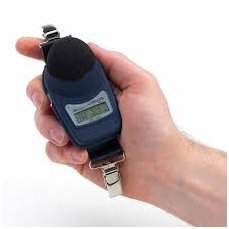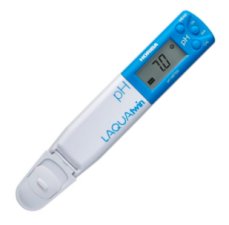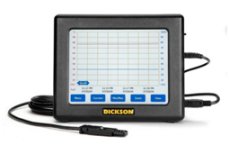Experimenting with Refractometers and Honey.
Experimenting with Refractometers and Honey. |
July 2013 Newsletter - Experimenting with Refractometers and HoneyWe have some pretty exciting news to share this month. Instrument Choice (Synotronics Pty Ltd) has been announced as a finalist in this year’s Telstra Australian Business Awards. We were lucky enough to be finalist last year and this year we are hoping for the win. We are up against some very good business’ so it won’t be easy. You can check out our competition on the Australian Business Awards website. We will keep you up dated of how we go, and we will be facebooking live from the event, you can follow us here. Win or lose we are all really looking forward to the Gala Dinner, it is a great night and a chance for everyone to let their hair down after another big year. Over the past couple of months we have noticed an increase in the number of refractometer enquiries we have been receiving. This month Daniel puts a Honey refractometer through its paces, testing a range of supermarket bought honeys. We have been madly adding new products to our range over the past couple of weeks so Tim will be introducing you to some of our new standout lines. Remember; if you have any questions regarding tests you need to conduct or specific instrumentation please give us a call. Until next month…Tyson Grubb | |||||||||||||||||||||||||||||||||||||||||||
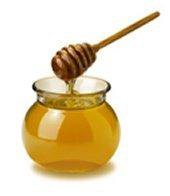 Sweets for my sweet and sugar for my honey.This month we will be testing different types of honey with a refractometer to determine their water content. Honey with a water content greater than 20% is at a higher risk of fermentation. Fermentation causes a reduction in honey quality and adversely affects the taste. Read on to find out what we did! | |||||||||||||||||||||||||||||||||||||||||||
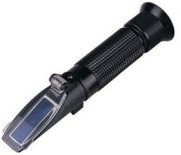 Equipment used
| |||||||||||||||||||||||||||||||||||||||||||
Method Each of the honey containers were opened and a small sample was placed on a ceramic plate ready for measurement. The IC-MR90ATC refractometer was calibrated to 72% Brix with olive oil (72 % is the known Brix level of olive oil) prior to the initial test to ensure accuracy. After calibration, each of the samples were measured for their water content and this was recorded. We also recorded the Brix and Baume readings for reference. The refractometer was cleaned with a soft cloth and demineralised water between each measurement. We also recorded the temperature and humidity of the room prior to each reading for each of the samples for reference using a hygrometer. 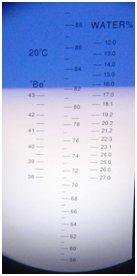 View through refractometer eye piece for Blue gum honey Samples tested We tested 6 types of honey to get a good gauge on the types of moisture content that are acceptable in packaged honey. The samples included Blue gum, Kangaroo Island, Leatherwood, Creamed, Home brand, and Fast food. Results
Discussions and conclusions All of the samples we tested were well below 20% moisture content and as such are at less risk of fermentation. The honey with the lowest moisture content was the Blue Gum honey at 16.2%, whilst the highest was the Kangaroo Island Honey at 17.5%. It is interesting to note that all of the honeys are within 1.3% of each other. We were unable to obtain a result from the creamed honey as it kept giving erroneous values. This was due to the fact it is an opaque liquid that wouldn’t allow the light to pass through like the other honeys and therefore would not give a correct moisture or Brix measurement. Honey with a high moisture content is at risk of fermenting due to the presence of yeast species within the honey. At low moisture contents these yeasts cannot grow as the sugar depletes the water from the yeast cells. However, as the moisture content increases the yeast cells no longer remain dormant and can begin to grow. As the yeast cells multiply they produce alcohol. The produced alcohols can then break down and turn into acetic acid and water. This gives honey a sour and off taste. It may also result in a change in texture of the honey, small bubbles within the honey or foaming on the surface. It also interesting to note that honey is a hygroscopic liquid, meaning it attracts moisture from the air. Therefore in a very dry, warm atmosphere the moisture content will actually decrease if it is exposed to this environment and vice versa if it is exposed to a cold, moist environment. Therefore keeping your honey stored in an air tight container will lessen the risk of fermentation as it cannot be affected by moisture in the air. Hopefully you have found this month’s newsletter enjoyable, if you have any questions please contact one of our scientists and they will be only too happy to assist you. | |||||||||||||||||||||||||||||||||||||||||||
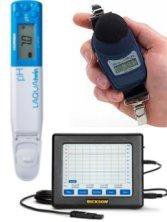 What’s new this month?Every month we are adding new exciting products to the website, here are the latest for July. Casella dBadge personal sound exposure meters Horiba range of water quality meters Dickson digital chart recorders | |||||||||||||||||||||||||||||||||||||||||||
| |||||||||||||||||||||||||||||||||||||||||||

